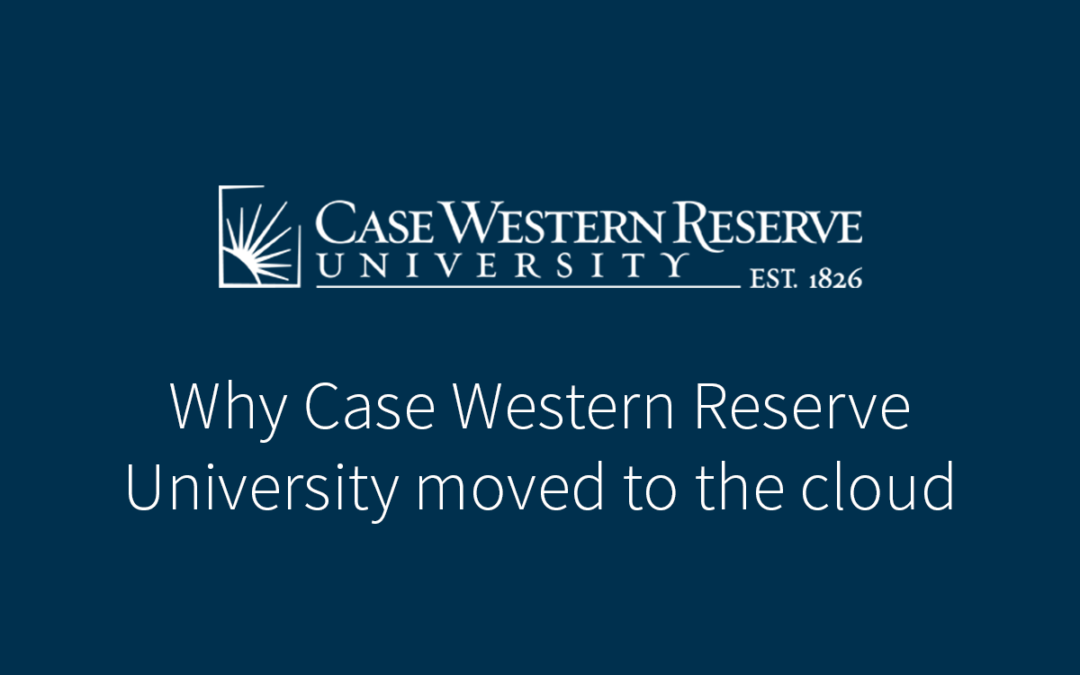I’m Mark Tennant, the IACUC & Animal Resource Center Support Specialist at Case Western Reserve University. Back in 2014, we used on-prem software to manage IACUC protocol submissions, but users said it was clunky and disliked the functionality and downtime. We wanted to replace our IACUC software with something that was user-friendly, powerful, and modern-looking. We also wanted to be able to manage animal facility operations, including vet care.
Should we switch to cloud-hosted software? we wondered. And, uh, what does the cloud even mean?
What is cloud computing?
Let’s take a quick trip back in time. Remember the ’90s? Brad and Jen were together, Beyonce was just one-third of a musical group, and computers were big and clunky. If you wanted to use new software, you went to Best Buy, and you bought a box with a CD-ROM in it. If you needed to save a Word doc, you popped in a floppy disk.
Fast forward to today, and you can download software and save your files online. That’s because files and software are stored “in the cloud” instead of on your hard drive or your company’s network.
But it’s not literally in the sky. The cloud just means you don’t have to store the data on-premise. It’s still stored somewhere, just offsite in a data center. Imagine a huge facility with racks of hardware, not just for your data, but lots of other people’s too. It’s all accessed over the internet, which brings us to the benefits of the cloud…
Benefits of cloud computing
Using software hosted on the cloud instead of onsite has a lot of benefits:
- There’s less burden on your IT team. They don’t need to buy or maintain servers or other hardware for software that’s hosted in the cloud, freeing up time and money for other projects.
- It’s flexible and scalable. As your organization grows, you don’t have to worry about running out of space, because the cloud can scale with you and support hundreds or even thousands of additional users.
- It’s often cheaper. Obviously it depends on the software, but the overall savings of cloud-hosted software can be higher long-term compared to hosting at your organization (after the initial cost of implementation).
- It’s secure. It’s a myth that the cloud is less safe than on-premise. A company like Amazon Web Services (one of the biggest cloud hosting providers) has much more security than the average organization.
- Software updates are easier. Your service provider handles updates, so you can save valuable time installing the latest version.
- You can work remotely. As long as you have internet access, you can work from anywhere: home sick, on a flight, on a train, etc. You don’t have to be on campus!
Is cloud computing right for you?
Remember, if you’re thinking about moving to the cloud, your organization’s IT department will need to be on board and buy into the decision. After all, they’ll be the point people working with the cloud services provider. So if you’re considering the cloud, here’s what to do:
- Contact your organization’s IT folks for technical advice and, of course, buy-in. They’re your best resource.
- Ask the vendor if they offer a trial cloud deployment so you can get an idea of the application’s usability and interface, as well as how quickly and easy it is to perform tasks. (Not all vendors offer this, but it can’t hurt to ask.)
- Test, test, test. Invite your power users to test as well!
Here are some questions to ask the service provider you’re considering:
- Compliance issues. Whenever data and other important files are stored using external services, the risk of compromise should be considered, especially with sensitive data like patient records (IRB). Ask each vendor, are they compliant with the latest security standards, such as SOC2? How do they ensure sensitive non-public info isn’t shared?
-
- Data storage. Is there a limit to how much data your organization can store? (Is pricing tiered, so you have to pay more if you go over the limit?) Or is it unlimited?
- Maintaining data integrity in the cloud. Technically, your service provider could delete unused data after a certain period of time. How long does this vendor keep data? Will they warn you if they’re going to delete something?
- Ensuring availability and access. What happens if there is a service disruption or component failure?
- Protection from loss of data. Does the vendor keep backup copies of data? Are there other policies in place to prevent permanent data loss?
- Business continuity. If there’s a disaster, what’s the plan to ensure operations can resume ASAP? What are the targets for recovery point objectives (RPO) and recovery time objectives (RTO)?
- Uptime. How does the vendor work to reduce downtime? What percent uptime did they have in the past year? What is their uptime goal? (For example, Amazon Web Services S3 has an uptime goal of over 99.99%.) Do you receive a service credit if downtime is excessive?
Whew. That’s a lot to consider!
When we were evaluating our options at Case Western, we chose to go with Cayuse’s cloud-based Animal Oversight and Vet Care software, and I’m so glad we did. It’s saving us so much time, helped us stay compliant, and made everybody a lot happier.
We love the benefits of cloud hosting, such as being able to submit or review IACUC protocols anywhere (like working from home). If you’re interested, reach out to Cayuse and their team will help you figure out if it’s right for you, too.
Guest post by Mark Tennant, IACUC & Animal Resource Center Support Specialist, Case Western Reserve University.


